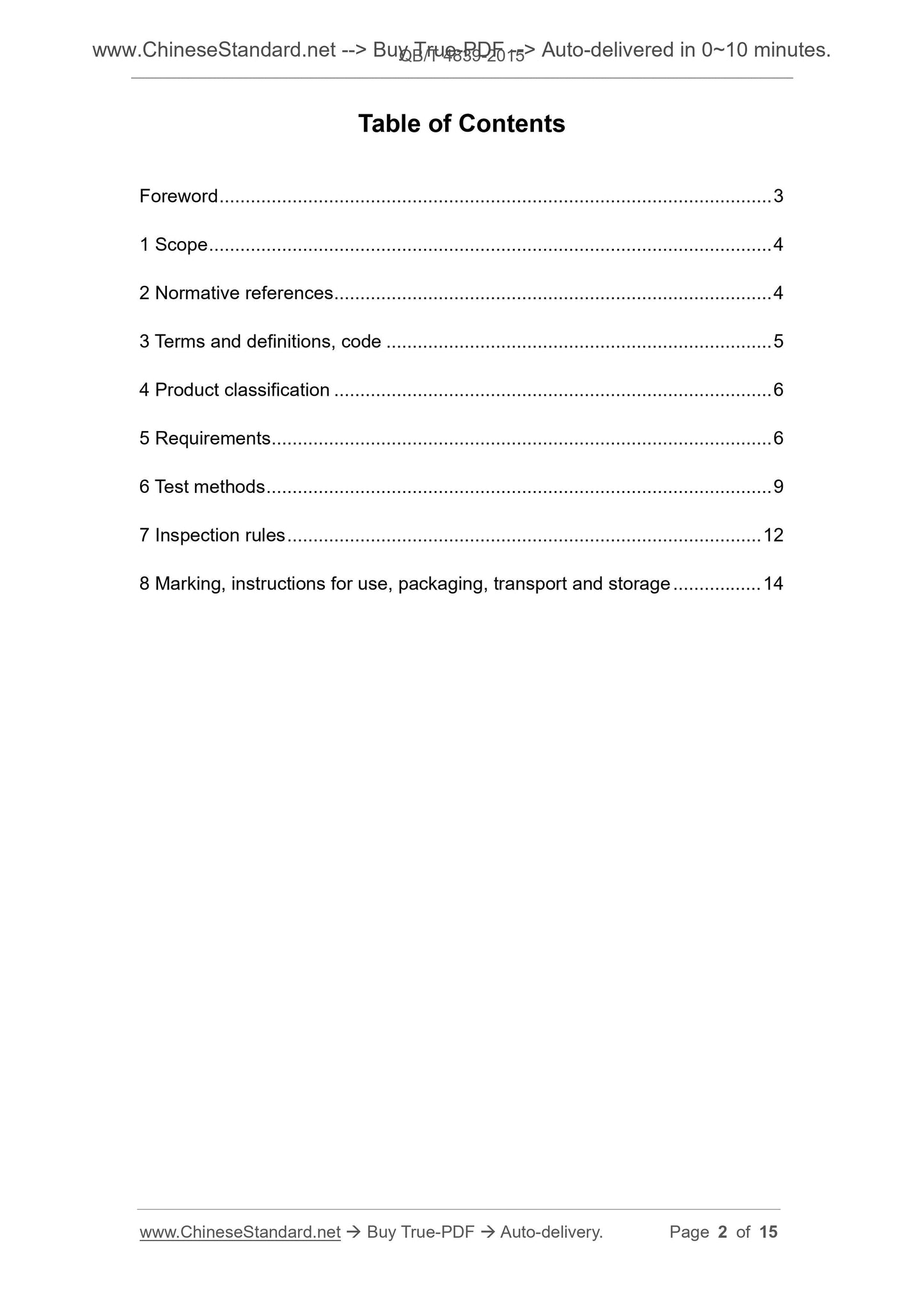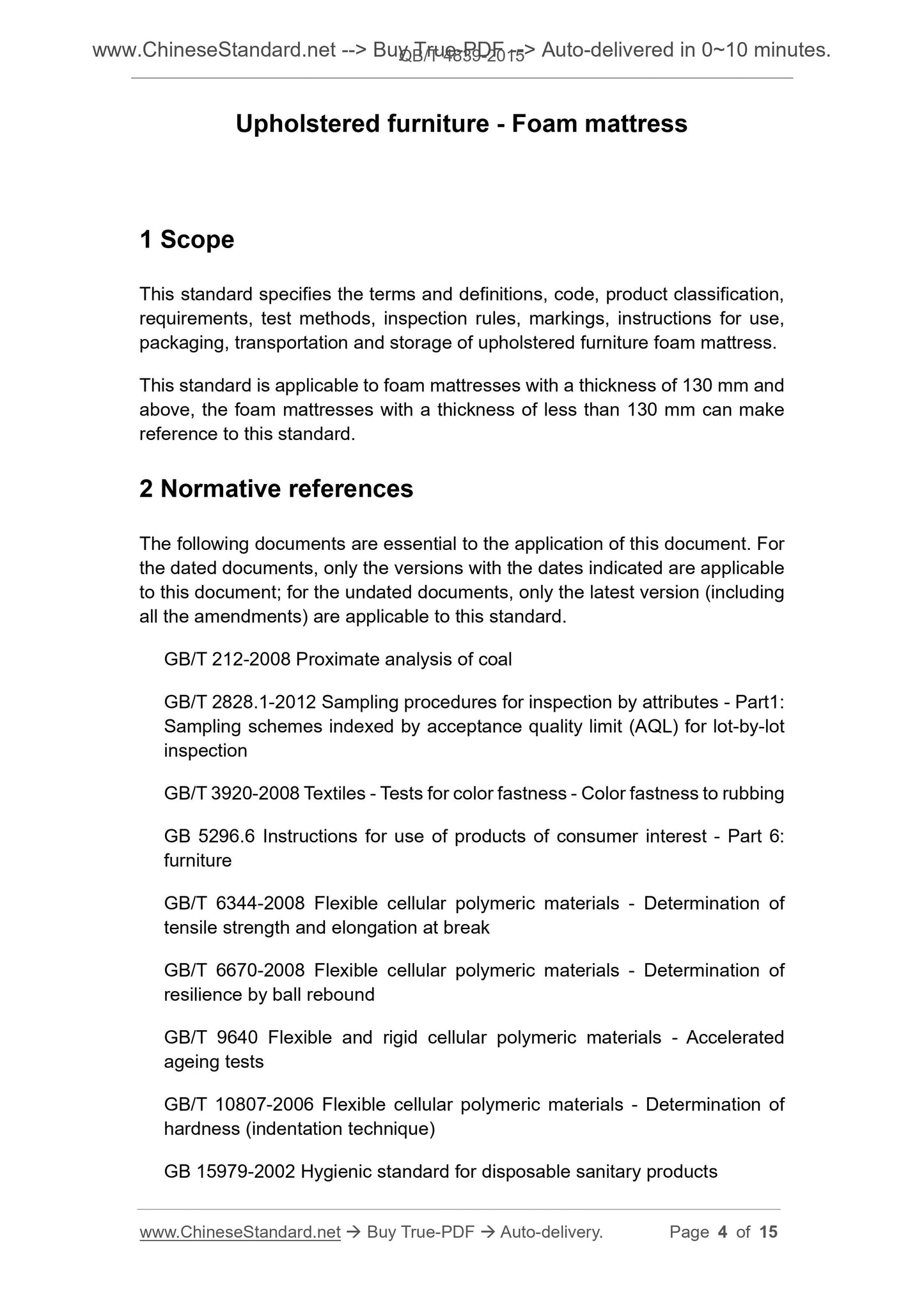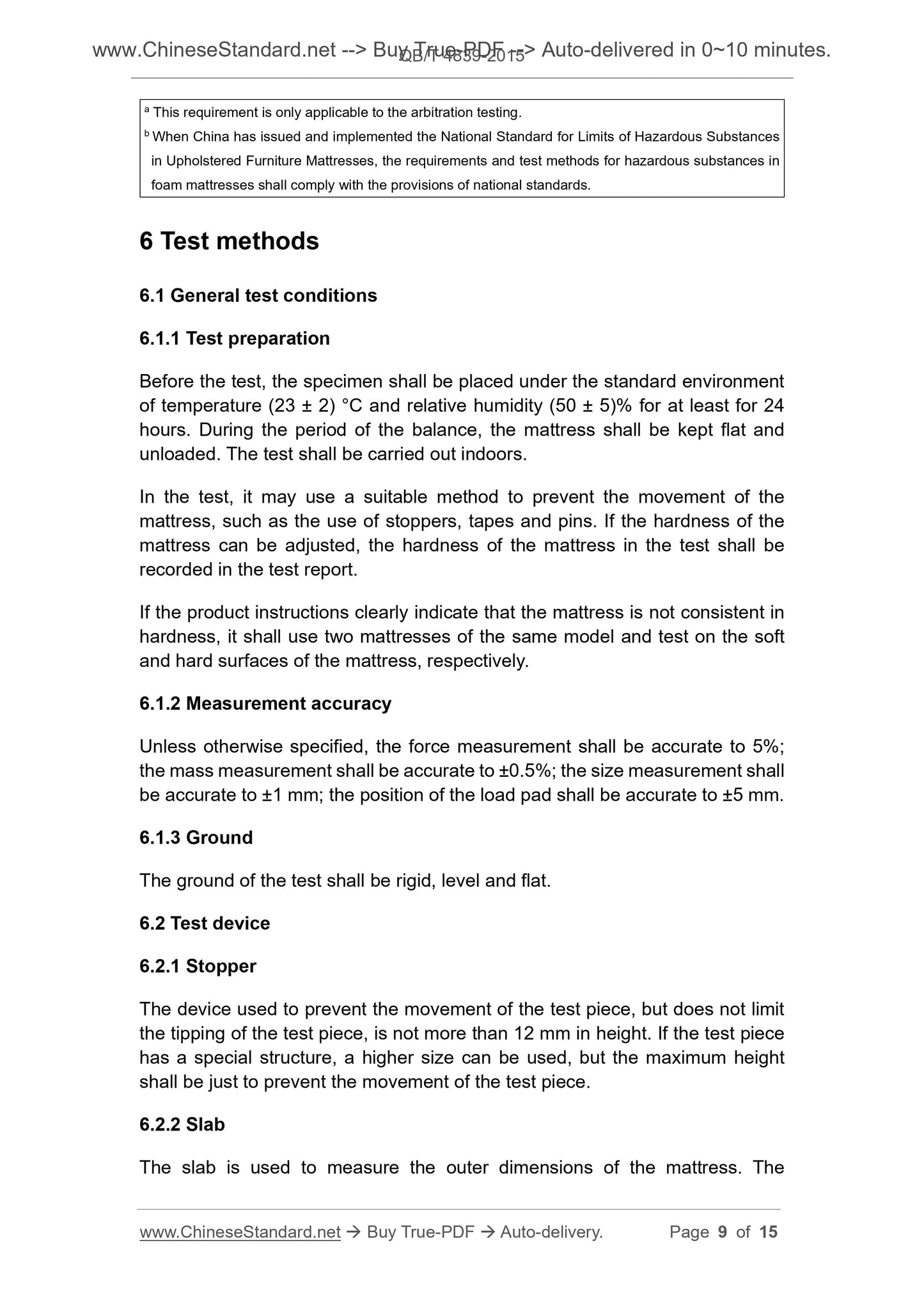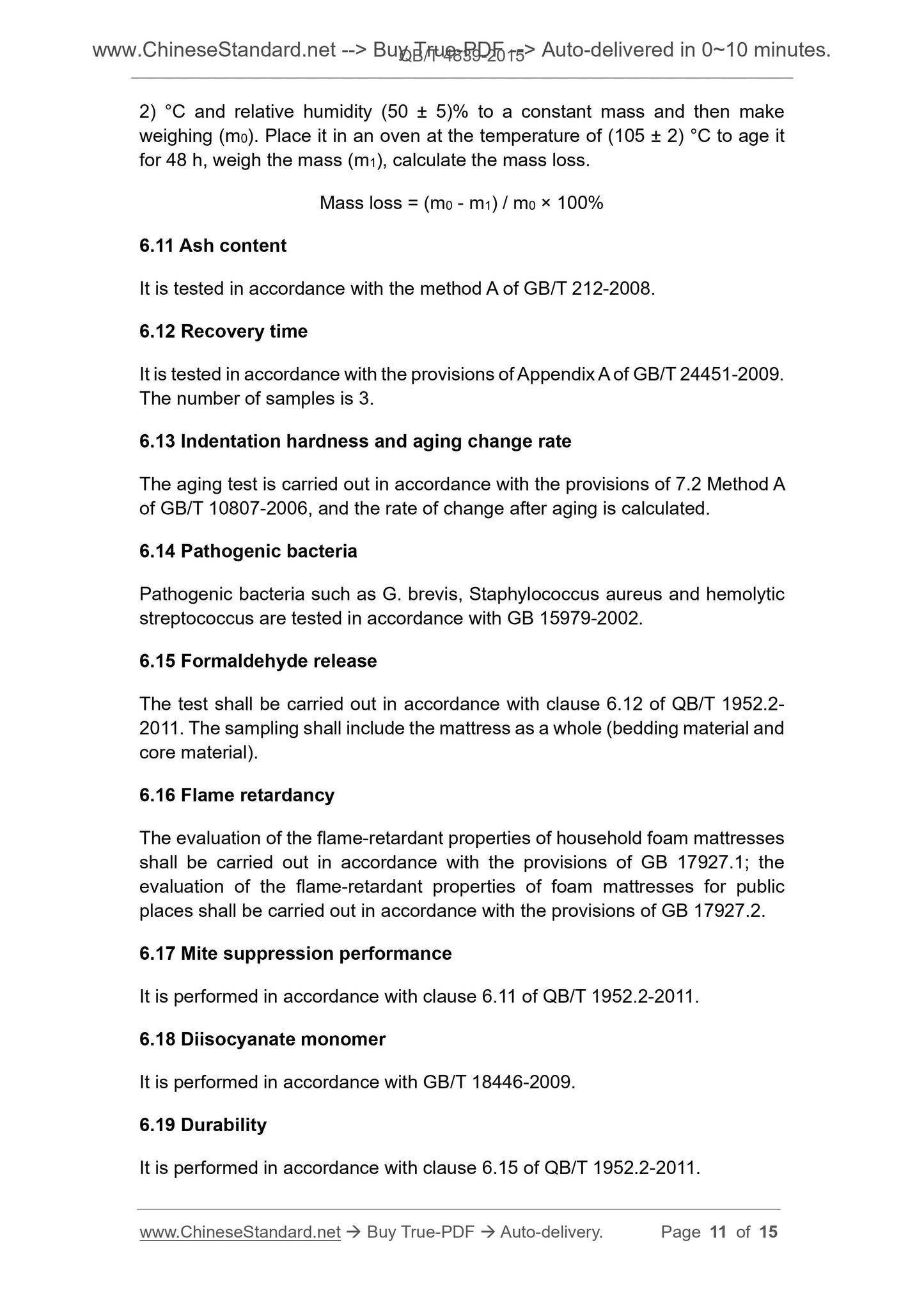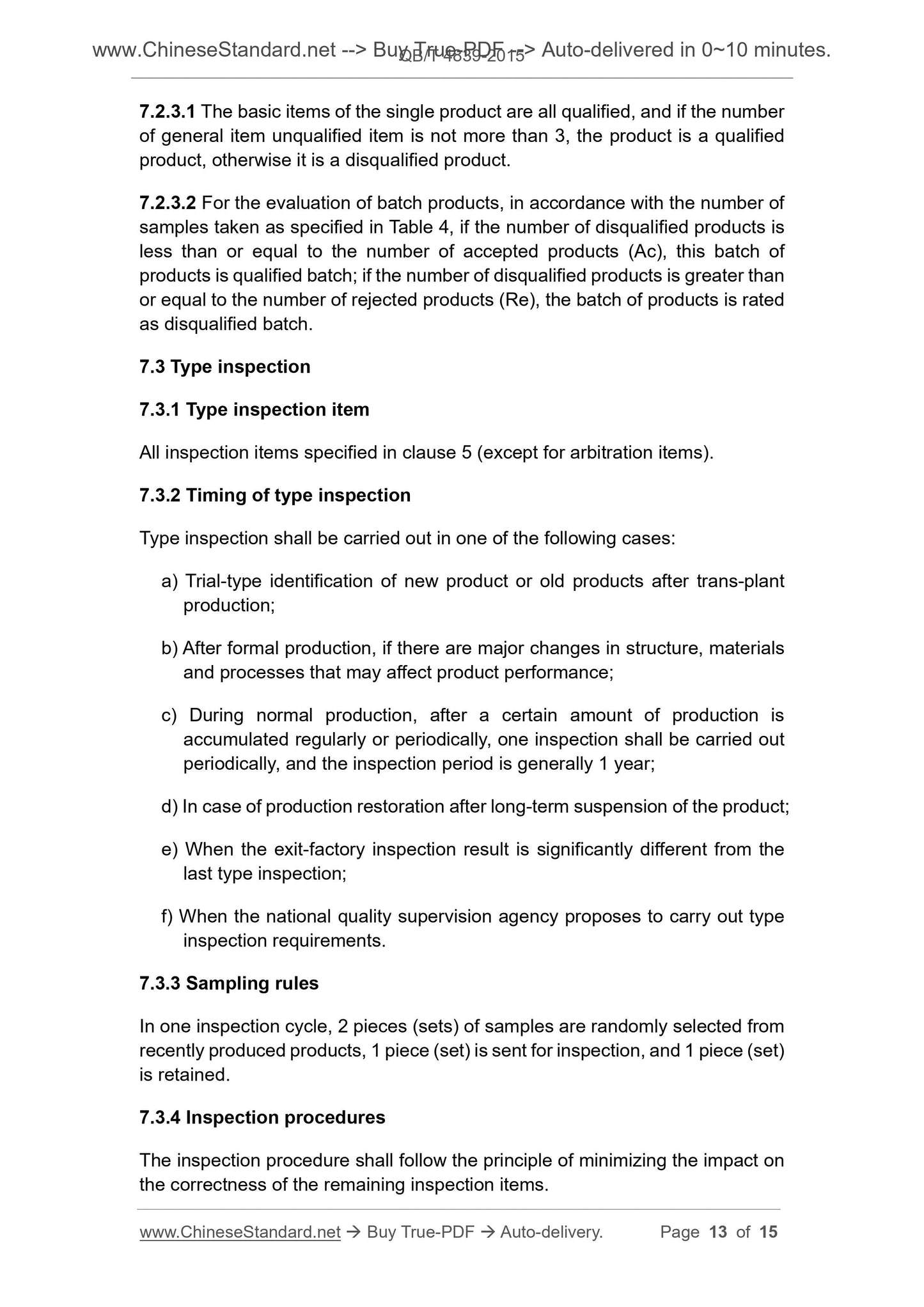1
/
of
6
PayPal, credit cards. Download editable-PDF and invoice in 1 second!
QB/T 4839-2015 English PDF (QB/T4839-2015)
QB/T 4839-2015 English PDF (QB/T4839-2015)
Regular price
$135.00
Regular price
Sale price
$135.00
Unit price
/
per
Shipping calculated at checkout.
Couldn't load pickup availability
QB/T 4839-2015: Upholstered furniture - Foam mattress
Delivery: 9 seconds. Download (and Email) true-PDF + Invoice.Get Quotation: Click QB/T 4839-2015 (Self-service in 1-minute)
Newer / historical versions: QB/T 4839-2015
Preview True-PDF
Scope
This standard specifies the terms and definitions, code, product classification,requirements, test methods, inspection rules, markings, instructions for use,
packaging, transportation and storage of upholstered furniture foam mattress.
This standard is applicable to foam mattresses with a thickness of 130 mm and
above, the foam mattresses with a thickness of less than 130 mm can make
reference to this standard.
Basic Data
| Standard ID | QB/T 4839-2015 (QB/T4839-2015) |
| Description (Translated English) | Upholstered furniture - Foam mattress |
| Sector / Industry | Light Industry Standard (Recommended) |
| Classification of Chinese Standard | Y81 |
| Classification of International Standard | 97.14 |
| Word Count Estimation | 9,914 |
| Date of Issue | 2015-07-14 |
| Date of Implementation | 2016-01-01 |
| Quoted Standard | GB/T 3920-2008; GB 5296.6; GB/T 6344-2008; GB/T 6670-2008; GB/T 9640; GB/T 10807-2006; GB 15979-2002; GB 17927.1-2011; GB 17927.2-2011; GB/T 18446-2009; GB/T 24451-2009; QB/T 1952.2-2011; GB/T 212-2008; GB/T 2828.1-2012 |
| Regulation (derived from) | PRC MIIT Announcement (2015 No.49) |
| Issuing agency(ies) | Ministry of Industry and Information Technology |
| Summary | This standard specifies the terms and definitions, codes, product classifications, requirements, test methods, inspection rules, marking, instructions for use, packaging, transport and storage of foamed mattresses in soft furniture. This standard applies to the thickness of 130 mm and above the foam-type bed, the thickness of less than 130 mm foam mattresses can refer to the implementation. |
Share

